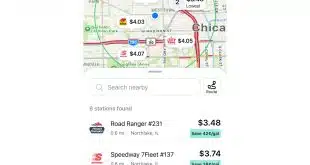Consumers have turned to mobile and desktop buying in record numbers. Merchants and processors are figuring out how to sustain the surge.
E-commerce has been booming since the start of the Covid-19 pandemic and is showing no signs of slowing down. In 2021, online consumer spending totaled a record $855 billion, up 9% from 2020, according to Adobe Inc.
Myriad factors are driving the surge in online spending. One factor is that consumers are buying more everyday products online, such as household items and groceries, which in turn has increased the frequency of their online purchases.
Another factor is a growing preference for buy online, pick up instore options (BOPIS), as they afford consumers the convenience of not only buying online but also knowing the item will be waiting for them in-store the same day, rather than expecting to have it delivered.
And yet another trend embedding online purchasing in consumers’ daily lives is online meal ordering. For many restaurants, online ordering for take-out or delivery has become a must as consumers’ willingness to dine out has ebbed and flowed with the unpredictable nature of the pandemic.
With these new online-shopping habits firmly ingrained, payments experts predict consumers will not revert to their pre-pandemic patterns one the pandemic subsides.
A ‘Daily Activity’
“A year ago, questions were raised about whether consumers’ online buying habits would stick post-pandemic. A year later, the stickiness of e-commerce is not going down,” says Chris Abele, vice president for Carat and digital commerce strategy at Fiserv Inc. “The convenience and speed of e-commerce continues to win over consumers and create compelling user experiences that keep consumers coming back.”
Online sales for the 2021 holiday shopping season show just how ingrained e-commerce has become in consumers’ lives. From Nov. 1 through Dec. 31, consumers spent $204.5 billion, up 8.6% from the same period in 2020, according to the Adobe Digital Economy Index. During that period, e-commerce sales surpassed $3 billion in daily spend a record 38 days, compared to 25 days in 2020.
Helping drive that trend was that consumers spread out their online purchases during the holiday-shopping season. This contrasts with the former pattern of spending primarily on the traditional big holiday sale days, such as Black Friday and Cyber Monday.
Plus, consumers began their holiday shopping earlier. Online sales during the three and a half weeks before Thanksgiving increased more than 19% compared to the same period in 2020, while sales the five days between Thanksgiving and Cyber Monday, also known as Cyber Week, were down 1.4% from a year earlier, according to Adobe.
Of particular note about 2021 online holiday sales is that they grew despite persistent bottlenecks in the supply chain that have sparked inflationary prices and increased the appearance of out-of-stock messages on merchant Web sites for certain items.
Consumers saw more than 6 billion out-of-stock messages online this past holiday shopping season, a 10% increase from 2020 and more than twofold compared to 2019, according to Adobe.
“This holiday-shopping season was the first time where big promotional moments like Cyber Monday and Black Friday took on less of the spotlight,” says Taylor Schreiner, senior director, Adobe Digital Insights. “E-commerce has become a ubiquitous daily activity and a flexible way for shoppers to navigate product availability and higher prices.”
With surges in the pandemic being driven by new variants of the Covid-19 virus, changes in online buying habits continue to be reinforced, which in turn lessens the odds consumers will revert to their pre-pandemic online-purchasing habits once the pandemic ends.
“The pendulum on consumer online buying habits may swing back a little once the pandemic subsides, but not by much,” says Ginger Schmeltzer, a strategic advisor for Aite-Novarica Group, a Boston-based consultancy. “At the outbreak of the pandemic, a lot of consumers, especially those that were most vulnerable, turned to online shopping out of necessity, but since then, they have found it beneficial enough to continue embracing it.”
Another trend to emerge during the pandemic is that processors are seeing different buyer profiles. For example, ACI Worldwide Inc. is seeing greater spreads in the time of day online shoppers are interacting with e-commerce sites, the products they purchase, and the type of sites with which online shoppers interact.
“Online gaming has been very popular during the pandemic, and we are seeing more daytime visits to gaming sites,” says Amanda Mickleburgh, director for product merchant fraud at ACI. “We’ve also seen changes in the types of devices being used to make online purchases, including devices connected to the Internet of Things.”
A BOPIS Boost
With the gains made during the pandemic expected to stick, payment experts say merchants need to do more to meld the online and in-store sales channels if they want to continue to benefit from those gains, as consumers have shown they will move freely between the two.
“E-commerce is critical to a merchant’s business, especially small and medium-size businesses, because without it they will miss out on a segment of consumers that prefer to shop entirely online or start in one channel and end in the other,” says Afshin Yazdian, chief executive, U.S. acquiring, for Paysafe Ltd. “It’s also a way for smaller merchants to compete with big retailers. If a merchant lacks an e-commerce channel, it can hurt their business.”
One way merchants can effectively meld the online and in-store channels is by enabling BOPIS. Aite’s Schmeltzer cites the example of a local bookstore that adopted a BOPIS model early during the pandemic, when many consumers were avoiding stores that did not sell essential items such as food and bath products.
“It’s an example of how far downstream BOPIS is moving and how creative storefront merchants are becoming with e-commerce since Covid,” Schmeltzer says.
Another indication of how ingrained BOPIS has become is how larger retailers have expanded the space dedicated to it. “BOPIS has become a permanent feature for big-box merchants. It’s table stakes now,” says Claude Clausing, chief business development officer for Exact Payments, a Scottsdale, Ariz.-based processor specializing in e-commerce.
The recent holiday-shopping season shows just how important BOPIS has become to merchants. Retailers that offer in-store/curbside pickup saw that fulfillment option used for 23% of all online orders during the holiday shopping season, down slightly from 24% in 2020 but up from 22% in 2019, an indication that demand for the service remains steady, according to Adobe.
On Dec. 23, the percentage claimed by in-store/curbside pick-up orders placed surged to 40%. In addition, curbside orders averaged $91, with 2 items typically in the shopping cart, Adobe says.
Multichannel Shopping
Further enhancing the appeal of e-commerce is that consumers can initiate a search for an item online at various merchants in a 20-mile radius of their home, for example, to see which has the item in stock and price compare. The shopper can order and pay online, then pick the item up same day.
“This way, a consumer doesn’t have to go to multiple stores searching for an item,” Schmeltzer adds. “Instead, consumers can start in one channel and finish in another. Merchants are getting comfortable with the idea that there is more than one channel for servicing customers.”
Another sign that the gains e-commerce has made during the pandemic will stick is that most small merchants that did not have an online presence prior to the pandemic have established one. In addition, those with previously modest online stores are beefing them up.
Many small merchants lacking the resources to launch their own e-commerce store are turning to online marketplaces, such as Amazon.com, to launch a store and help with delivery logistics, Mickleburgh says.
“We’ve also seen merchants expand or set up stores on social-media sites and use social media to promote those stores,” she adds.
The buy now, pay later (BNPL) trend (“The BNPL Phenomenon,” October 2021) is also helping to fuel the popularity of e-commerce. During the past two years, slews of merchants have added BNPL as an online payment option, as well as in-store.
Revenue form BNPL orders rose 27% during the 2021 holiday shopping season compared to 2020, according to Adobe. At the same time, the number of online purchases paid for using BNPL during this period rose 10%, compared to 2020. On average, consumers using BNPL spend $224 and place about three items in their shopping cart, Adobe says.
“Adding more alternative payment options like BNPL and mobile wallets is a way for merchants to add value online,” says Fiserv’s Abele.
To illustrate his point, Abele says that many online grocers serviced by Fiserv have added acceptance of electronic benefits cards to their sites.
“EBT cards can account for 15% to 20% of a grocer’s in-store sales, but you didn’t see them accepted online by grocers pre-pandemic,” he says. “Now, nearly all grocers with an online presence accept them. Without that acceptance, they would not be able to connect online with the demographic that uses EBT cards.”
A B2B Boom
One area of e-commerce that tends to get overlooked is business-to-business sales. Traditionally, B2B suppliers have been slow to embrace e-commerce, especially if they have an electronic data interchange network to which buyers can connect. While barriers to B2B e-commerce were falling prior to the pandemic, that trend has picked up the past couple of years.
“We have seen a boom for B2B e-commerce,” says Nic Beique, founder and chief executive for Helcim, a Calgary-based processor. “A lot of check-based transactions are moving to e-commerce. We are also seeing more online invoicing.”
Beique adds the majority of Helcim’s transaction volume consists of card-not-present transactions. The current breakdown is 60% CNP and 40% card present, whereas pre-pandemic it was evenly split.
While Helcim has rolled out several e-commerce tools for B2B suppliers during the pandemic, Beique adds that, surprisingly, B2B buyers are frequently using mobile devices to make purchases, an indication of how deeply e-commerce is taking root in this space. “We thought [our B2B e-commerce volume] would be more desktop-driven,” Beique adds.
Just as processors are adding more alternative payment options for e-commerce merchants, the same trend is occurring in B2B. Exact Payments, for example, plans to offer its B2B suppliers non-card-based payment options, such as ACH and real-time payments.
With all indications pointing to online purchasing being deeply ingrained in consumers’ consciousness, many observers say merchants and B2B suppliers that don’t offer an e-commerce store are at risk of losing their connection to customers, even those who still frequent the storefront, payment experts say.
“E-commerce doesn’t replace the need for a storefront, but it does help create a deeper connection with the customer, because it’s a channel that allows merchants to service their customers wherever they are, whenever they want to shop,” says Paysafe’s Yazdian. “It’s why we are seeing more e-commerce sales and will continue to see a melding of the online and in-store worlds.”




